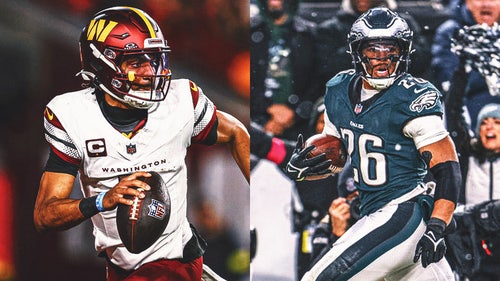
2023 NFL draft class rankings: Which teams added the most consensus value?
Grading the draft seems to be quite a hot button topic. Post a list of draft grades online and half the people who see it will complain that "you can’t grade the draft this close to the draft." They want you to wait years to do so.
I think that’s a ridiculous assertion. Because the same people who want you to wait to grade a draft are those who read prospect evaluations posted online for months leading into the draft. The same ones who analyze every measurement and combine test. They project the transition of players to the NFL, endlessly discusses best team and scheme fits — and ultimately, while watching the draft, get mad at teams for drafting player X versus Y.
And yet they dislike grading a draft class?
Draft grades are rarely reliable, but they correlate very well with prospect evaluations.
If someone hates grades because they feel they "aren’t reliable", they should realize that the prior several months when they ingested prospect evaluations through draft coverage (without complaining at all) were a colossal waste of time. Because if grades aren’t reliable, neither are prospect evaluations.
I enjoy reading prospect evaluations and post-draft assessments. I think general accuracy across the board is likely to be low, but it’s better than the alternative of doing zero analysis and having no clue what to expect from a draft class and their impact on the upcoming season.
An exercise I enjoy doing and believe has some merit is evaluating draft classes based upon a "wisdom of crowds" approach. This approach uses mock drafts and consensus big boards to compare expected draft position with where players were picked.
The methodology I like to use incorporates consensus mock drafts from Ben Robinson and consensus big boards assembled by Arif Hasan.
We assign draft capital to each pick and compare the total draft capital used to draft that player relative to what was expected. Based on this methodology, we can determine which teams reached most to draft a player and which teams were able to get great value on players as they were drafted late.
These aren’t draft grades. There is no personal bias involved. But to answer a few questions about the methodology:
Looking at big boards does tend to predict the draft quite well.
And while we don’t know how these prospects ultimately will transition to the NFL nor how strong their careers will be, that is not the point of this exercise — nor does anyone possess that information at this time. The goal is to examine the teams who overdrafted or underdrafted.
These aren’t grades; they are ranking of NFL teams’ usage of draft capital, from No. 1 (best) to 32 (worst):
1. Steelers
2. Eagles
3. Browns
4. Broncos
5. Dolphins
6. Giants
7. Ravens
8. Titans
9. Bills
10. Colts
11. Bengals
12. Raiders
13. Bears
14. Vikings
15. Texans
16. Rams
17. Seahawks
18. Saints
19. Falcons
20. Buccaneers
21. Packers
22. Cardinals
23. Jaguars
24. Jets
25. Panthers
26. Chargers
27. Cowboys
28. Patriots
29. Commanders
30. 49ers
31. Chiefs
32. Lions
It should be noted I look only at the top 250 draft picks in the draft and I look only at the top 325 big-board prospects.
Let’s examine a few teams one-by-one:
The Steelers cleaned up in draft value. Only one pick was a slight reach (drafted earlier than expected) but Pittsburgh drafted the bulk of their picks much later than they were expected to go.
The Eagles delivered a dominant performance, clocking in with the second-best ranking based on usage of draft capital.
Clocking in third on the list is another AFC North squad, the Browns. Cleveland had more top-250 picks than either the Steelers or Eagles, and none in the first two rounds. But it was impressive to see how they navigated through the players bypassed by other teams to find excellent value up-and-down the board.
One example of a team that operated on the different end of the spectrum: the Detroit Lions. While the Lions’ first two picks in the first round were head scratchers based on how highly they drafted each player, they also drafted players like Brodric Martin, Colby Sorsdal and Sam LaPorta much higher than predicted in rounds 2 through 5. This exercise does not determine that a player, such as Martin, is a bust or won’t play well in the NFL. It does showcase that Martin would have likely been available after the third round and the Lions did not have to draft him almost three rounds earlier than they did (expected to be pick 260, was drafted at pick 164, nearly 100 picks earlier).
The Patriots and Cowboys were two teams who drafted many players far earlier than expected.
Time will tell whether teams who drafted players too early actually made the right calls by landing players who were far better than the consensus opinion of them. But until that day, we can look at data and determine which of these teams did the best job optimizing draft pick usage.
Here’s a final look at 2023 draft capital used by all 32 teams on both offense and defense:
Warren Sharp is an NFL analyst for FOX Sports. He is the founder of Sharp Football Analysis and has worked as a consultant for league franchises while also previously contributing to ESPN and The Ringer, among other outlets. He studied engineering and worked professionally in the engineering field before using his statistical acumen to create predictive football models. You can follow Warren on Twitter at @SharpFootball.










